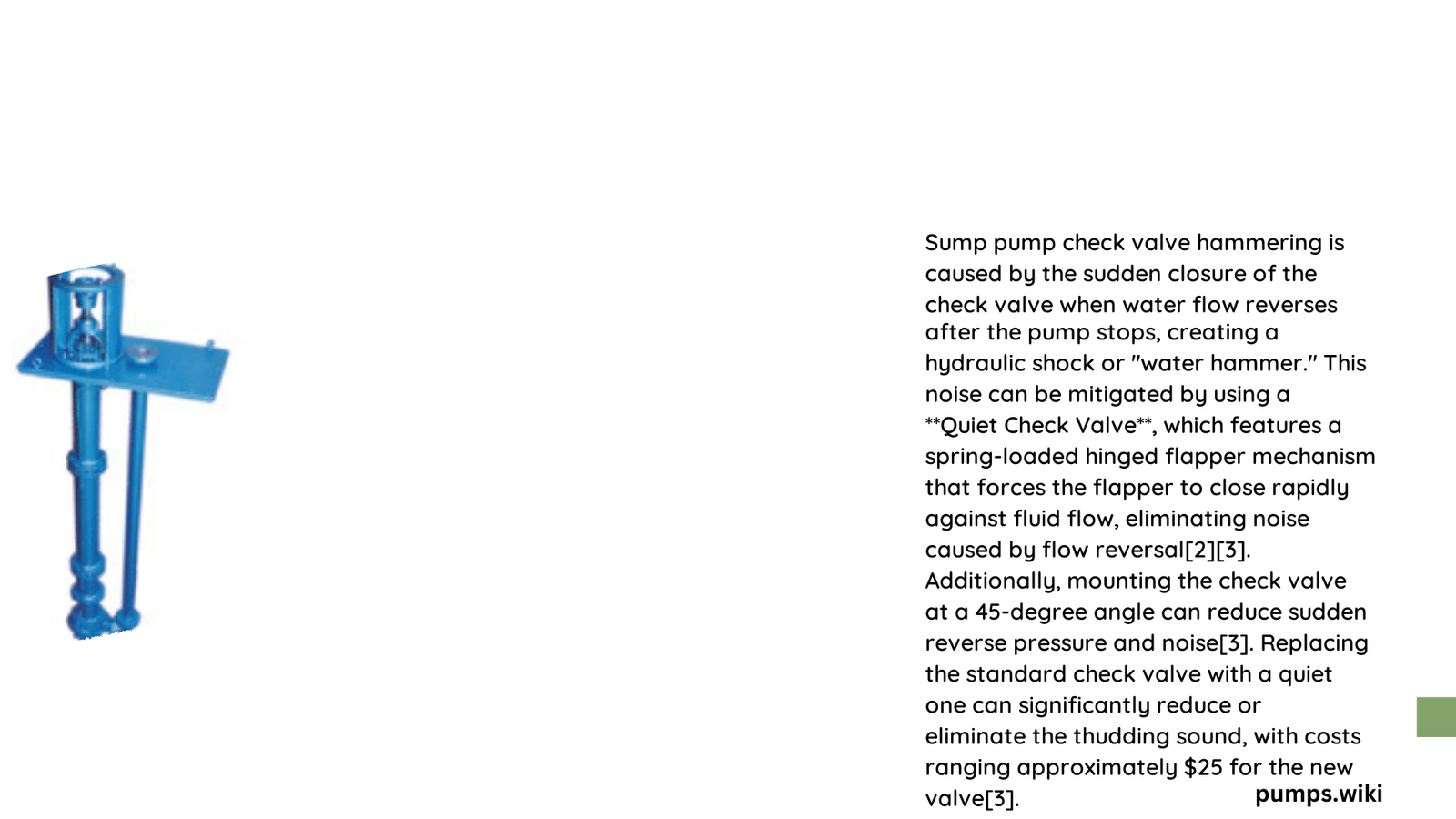Sump pump check valve hammering represents a critical hydraulic phenomenon causing destructive pressure waves in drainage systems. Homeowners frequently experience loud banging noises, potential pipe damage, and system inefficiencies when check valves malfunction. Understanding the root causes, diagnostic techniques, and strategic interventions can prevent costly repairs and ensure smooth sump pump operation.
What Causes Sump Pump Check Valve Hammering?
Water hammer in sump pump check valves emerges from complex fluid dynamics and mechanical interactions. Several primary mechanisms trigger this disruptive phenomenon:
Mechanical Flow Disruption Factors
- Sudden Valve Closure Dynamics
- Rapid valve shutdown creates instantaneous pressure surges
- Fluid momentum generates elastic stretching and abrupt reversal
-
Hydraulic shock waves propagate through piping system
-
Velocity and Elevation Influences
- High fluid velocities increase hammer potential
- Significant elevation changes amplify pressure fluctuations
- Complex pipe geometries enhance shock wave generation
Technical Valve Performance Indicators
| Performance Factor | Impact Level | Mitigation Strategy |
|---|---|---|
| Valve Cv Rating | High | Select appropriate valve size |
| Installation Angle | Medium | Ensure vertical alignment |
| Pipe Diameter | Low | Maintain consistent sizing |
How to Diagnose Sump Pump Check Valve Hammering?

Diagnostic Techniques
- Acoustic Analysis
- Listen for repetitive banging sounds
- Identify frequency and intensity of noise
-
Correlate sounds with pump cycling
-
Visual Inspection
- Check valve physical condition
- Examine pipe connections
- Look for signs of mechanical stress
Advanced Diagnostic Tools
- Pressure measurement devices
- Vibration analysis equipment
- Thermal imaging cameras
What Are Effective Prevention Strategies?
Technical Intervention Methods
- Spring-Assisted Silent Check Valves
- Integrated spring mechanisms
- Controlled valve closure
-
Reduced pressure surge potential
-
Installation Best Practices
- Minimum 10 pipe diameter straight section
- Proper valve orientation
- Quality mounting hardware
How to Maintain Sump Pump Check Valve System?
Maintenance Protocols
- Periodic Inspection
- Quarterly visual examinations
- Annual comprehensive assessment
-
Lubrication of moving components
-
Cleaning Procedures
- Remove accumulated debris
- Check for mineral deposits
- Verify seal integrity
Recommended Maintenance Schedule
| Maintenance Task | Frequency | Complexity |
|---|---|---|
| Visual Inspection | Quarterly | Low |
| Comprehensive Assessment | Annually | Medium |
| Component Replacement | Every 3-5 Years | High |
What Professional Interventions Exist?
Expert Recommendations
- Consult hydraulic engineering specialists
- Utilize advanced diagnostic equipment
- Consider system-wide hydraulic analysis
Technical Considerations for Replacement
- Evaluate current system performance
- Compare valve specifications
- Consider long-term reliability metrics
Replacement Decision Factors
- Age of existing system
- Frequency of hammer occurrences
- Potential repair versus replacement costs
Pro Tip: Always prioritize professional consultation when experiencing persistent sump pump check valve hammering.
Reference:
– DFT Valves – Water Hammer Prevention
– Valve Magazine – Check Valve Understanding
– Zoeller Pump Maintenance Guide
